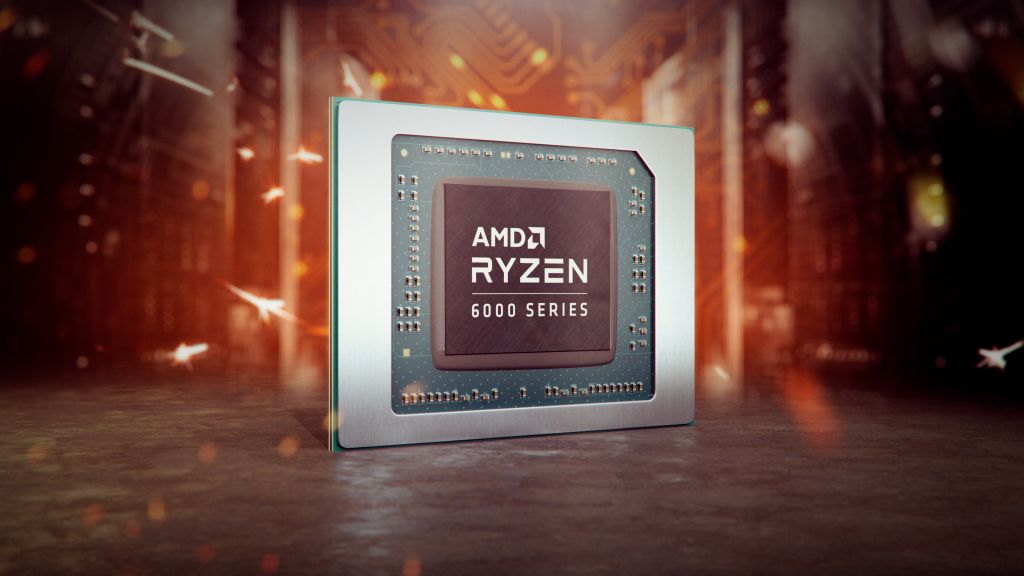AMD’s Ryzen 6000 mobile CPUs (codenamed Rembrandt) were announced and launched over four months ago in January and February, but it appears mainstream adoption has been slow for the new CPU lineup. According to ComputerBase, only eleven notebooks are actually using AMD’s new mobile CPUs right now in the four months that have transpired since launch.
Out of the eleven notebooks released with Ryzen 6000 parts, eight of those systems come from Asus, with the remaining three coming from Razer, Lenovo, and Alienware respectively. That makes Asus by far the most dominant manufacturer to use these new CPUs, with Razer, Lenovo, and Alienware only producing one SKU each with AMD’s new hardware.
The situation is strange considering Rembrandt can, in theory, go toe to toe with Intel’s new mobile Alder Lake CPUs depending on what performance figures you are looking at. Rembrandt comes with AMD’s new Zen 3+ microarchitecture that operates on TSMC’s 6nm node. Performance is promised to be up to 1.3X faster than Ryzen 5000 mobile while being more efficient at the same time, with as many as 50 new power management features added to the new architecture.
According to AMD PR slides, all these improvements culminate into a 2.62X performance per watt improvement over Alder Lake processors (AMD specifically targeted the Core i9-12900HK and directly compared it to its own Ryzen 9 6900HS).
In testing with a ROG Zephyrus G14 equipped with the new 6900HS, we found Rembrant’s performance to be quite competitive with laptops equipped with Intel’s i7-12700H — like the Alienware x14 and Gigabyte Aorus 17. Single-threaded performance was found to be on par with the Alder Lake counterparts, with the 6900HS primarily losing out to the 12700H in heavy multi-threaded workloads. However, this is to be expected considering the 12700H has more physical cores (despite the additional cores being E cores).
But most impressive results come from the battery life tests we conducted. The 6900HS-powered G14 managed a whopping 10 hours and 14 minutes of battery life. While the 12700H counterparts could only reach 4 to 5 hours respectively.
So despite Rembrandt being weak on the multi-threaded side of the equation, it remains very strong in single-core situations. While consuming far less power as it seems with our G14 review. Arguably, these two attributes combined make a superior gaming laptop anyways, since games are more sensitive to single-core IPC, and long battery life is a welcome sight for any device that is designed to be used on the go.
So there are positives for laptop manufacturers to use AMD’s new CPU architecture over Alder Lake, but it seems almost no one is taking advantage of AMD’s potential. With the exception of Asus.
Ryzen 6000U Series CPUs and Radeon RX 6000M GPUs Are Completely Missing
But the story doesn’t end there. ComputerBase also notes that AMD’s entire lineup of 6000U series CPUs is completely missing from the retail market, with zero laptop manufacturers using the new chips at all. The same goes with AMD’s Radeon RX 6000M lineup of GPUs, which are all clearly absent from any gaming notebook on the market today.
The only exception to this is AMD’s Radeon RX 6000S series products including the RX 6700S and RX 6800S. These GPUs are commercially available in the Asus ROG Zephyrus G14, like the one we reviewed not too long ago.
Arguably, availability problems could be related to TSMC and AMD more so than the laptop manufacturers. We’ve known for a while that TSMC is one of the busiest fabs in the entire world, and has struggled with providing enough wafers to its customers in a timely fashion, including orders going to AMD.
Intel, on the other hand, does not suffer from this problem since it builds everything in-house and owns its own fabs. If anything, it seems Intel has too much fabrication firepower on the table, now that the company is agreeing to produce chips for other companies.
However, these theories are just that — theories — as AMD has been silent on the matter. But hopefully, we’ll know more information on the problems soon. AMD plans to bring Zen 3+ to the AM5 desktop platform later this year, which should hopefully lead to a new announcement discussing Zen 3+ further with more announcements related to OEM integration.

